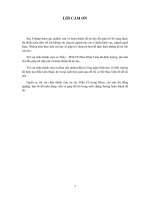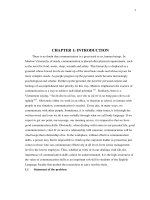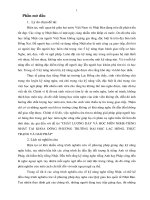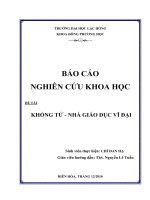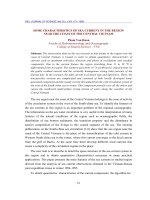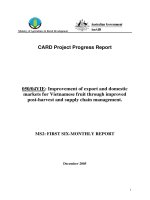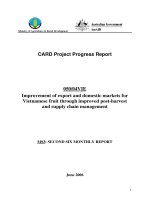Báo cáo nghiên cứu khoa học " Genetic Improvement of Forest Trees " pot
Bạn đang xem bản rút gọn của tài liệu. Xem và tải ngay bản đầy đủ của tài liệu tại đây (2.51 MB, 19 trang )
Genetic Improvement of
Forest Trees
Khongsak Pinyopusarerk
CSIRO/Ensis-Genetics
Canberra, Australia
Why Do We Need Tree
Improvement?
To develop new plantations superior
to their predecessors in one or
several key economic traits.
Variation within
a Species
Offer potential for
improvement
through selection
and breeding
between provenances
between families
Basic Elements of Tree
Improvement
• Well defined strategy and plan
• Clear objectives
• Hierarchy of populations
• Selection and mating
• Personnel and funding
Well Defined Strategy and Plan
• Improvement strategy – the framework of
ideas. Essential elements are:
(a) Type of selection and mating, starting with a broad
genetic base
(b) An efficient system for mass propagation of
outstanding selected individuals either as seed or
cuttings
• Improvement plan – a detailed work plan to
implement the chosen strategy
Clear objectives
Which traits to be
improved?
Disease resistance
Stem form
Vigour
Choosing traits
for measurement and
assessment
• survival
• dbh
• height
• stem volume
• wood density, colour
• timber strength, stiffness
• timber defects
• pulp yield
• fibre length
• stem straightness
• axis persistence/forking
• branch thickness
• branch angle
• pest and disease resistance
• growth stress
• tension wood
• fodder production
• fodder value
• other traits?
?
?
?
?
?
Activity Cycle –
Hierarchy of Four Populations
Base
population
Breeding
population
Propagation
population
Production
population
BASE
progeny
tests
seed
orchards/
clone banks
plantations
selection
mass
propagation
select trees
mating
Propagation
Population
(seed orchards)
Selection
Breeding
Population
Base
Population
Activity cycle for tree breeding
Crossing
Planting stock
for plantations
Selection and Mating
• Key activities in breeding
• Progeny trials to assess
variation within a species
• Open pollination or controlled
pollination
• Minimising potential of
inbreeding
Conditions for Production of Inbred Seed
Pollen
Self-fertilization
Isolated tree
Impact of Inbreeding
Conditions for production of high-quality seed
Pollinators
Outcrossing
• Wide genetic base - most trees unrelated
• Good cross-pollination
• Outcrossing between unrelated trees
Controlled Pollination
Improvement Program of
Acacia auriculiformis
Good progress in Thailand and Vietnam
Hybrids
• Natural or artificial
• Heterosis in F
1
generation
Hybrids
Uniformity of F
1
generation
Segregation of F
2
and subsequent
generations
Seed Production Area
Î Low-cost technology
• Establish stands with a mix of 50-
100 unrelated seed parents from
many sources
• Start at close spacing to allow
heavy and early selective
thinning
• Produce seed of somewhat
improved quality
• Outstanding individuals may be
used for clonal forestry after field
testing
Concluding Remarks
• Tree improvement is long-term investment and must be
well planned and executed
• Tree improvement must be on-going with subsequent
breeding cycles
• Need to improve skills of staff
• Abundant production of very high quality seed is
key component of tree improvement
